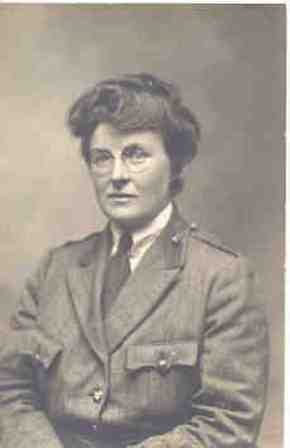Margaret Lothrop, born to Daniel and Harriett Lothrop on July 27, 1884 in Concord, Massachusetts, was the only child of parents who were deeply engaged with literature and interested in historical preservation. Her mother wrote many books under the pseudonym Margaret Sidney, including the Five Little Peppers children’s series, and her father was the founder of D. Lothrop Publishing Co.
Lothrop grew up in The Wayside, the home her parents had purchased in 1883, being drawn to its history as the residence of authors Amos Bronson Alcott, Louisa May Alcott, and Nathaniel Hawthorne. She came to know some of the great literary figures of the time, including John Greenleaf Whittier, Julia Ward Howe, and Samuel Francis Smith. Lothrop witnessed many social events hosted by her mother at her home, including the Hawthorne Centenary in 1904 where a monument was placed in the yard at The Wayside in honor of Hawthorne as well as fundraisers for such organizations as the Massachusetts Volunteer Aid Society. She also saw her mother open their historic house to sight-seers.
Influenced by her mother’s love of history and literature, Lothrop became the first member of the National Society of Children of the American Revolution, founded by her mother in 1895. Known as a scholar and accomplished horsewoman, she attended Concord public schools, graduating from Concord High School. Attending Smith College, she was a member of the Philosophical Society, the Italian Club, and a half back on the women’s field hockey team, graduating in 1905.
In 1912, Lothrop spent a year in California at Stanford University where she earned a Master of Arts in Economics. Back in Massachusetts, she worked at the Women’s Education and Industrial Union and the YWCA in Boston from 1913–1915 returning to Stanford University as a sociology instructor in the College of Arts and Sciences through 1928. During World War I she was in the Red Cross, serving as a Casualty Searcher in France, which included documenting graves, searching for families of men with memory loss, and speaking with dying men to identify their families.
Following the death of her mother in 1924, Lothrop formed a committee in Concord to plan to open The Wayside for tourists in 1928. After serving as the Secretary of the California Society of the Prevention of Cruelty of Children for two years, she returned to The Wayside in 1932. She researched the occupants of the house, coordinated staff and maintained the house for tours. She tried, to no avail, to find organizations that would purchase the house for educational purposes and wrote the book The Wayside: Home of Authors, published in 1940.
During World War II, Lothrop again served as a member of the Red Cross as well as the Massachusetts Women’s Defense Corps. Through the 1940s to early 1960s, she continued to maintain the house for tours, responded to letters from other researchers, wrote articles including “My House and the Minute Men,” and conducted her own research, including direct communication with the Hawthorne family.
Lothrop worked to have The Wayside declared a National Historic Landmark in 1963, and sold the house to the National Park Service to become part of Minute Man National Historical Park on June 18, 1965. She worked closely with the NPS staff, including contributing the bulk of her research to the park, giving oral histories, and speaking to groups. More than forty years of tireless work to preserve The Wayside was accomplished.
Margaret Mulford Lothrop died in Concord on May 14, 1970. Her legacy of historic preservation is witnessed in The Wayside: Home of Authors, where her persistence saved it for future generations. The house was opened to the public by the National Park Service on April 17, 1971.
Source: Minute Man National Historical Park

